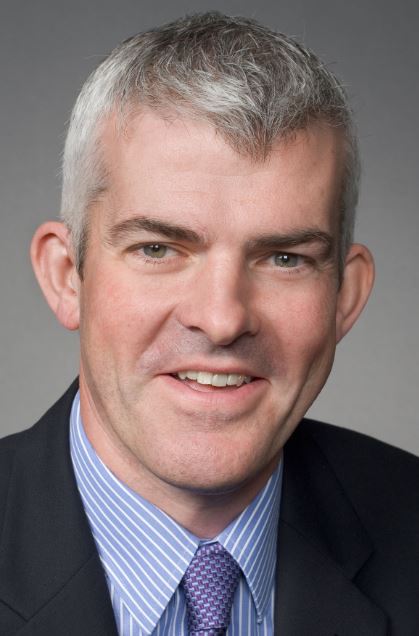Patient Voice: The Key To Clinical Trial Success
By Ed Miseta, Chief Editor, Clinical Leader
 Last year when Valerie Bowling kicked off the inaugural Patients as Partners conference, she did so in the midst of a snowstorm. That unfortunately cut down on the number of attendees to a conference that covers a topic about which she is very passionate. Fortunately, the weather cooperated this year and attendees at the March event in Philadelphia were treated to one speaker after another, from both pharma as well as advocacy groups, extolling the virtues of adding patient voice to the trial design process.
Last year when Valerie Bowling kicked off the inaugural Patients as Partners conference, she did so in the midst of a snowstorm. That unfortunately cut down on the number of attendees to a conference that covers a topic about which she is very passionate. Fortunately, the weather cooperated this year and attendees at the March event in Philadelphia were treated to one speaker after another, from both pharma as well as advocacy groups, extolling the virtues of adding patient voice to the trial design process.
Bowling, the executive director of Pharma and Biotech for The Conference Forum, notes building the speaker list was not an easy endeavor. She started by defining who is the patient, identifying the concerns of patients participating in trials, and then determining how to bring the voice of those patients into the trial design process. Only then did she begin to recruit participants. “It took us a while to figure it all out and decide on the stakeholders we needed to bring together to make this a success,” she says. “We reached out to pharma, advocacy groups, site managers, and of course the patients themselves. The response we got was overwhelmingly positive and we think that will show in the discussions that will take place here.”
 |
Jamie Macdonald, CEO of INC Research and co-chair of the Patients as Partners conference |
Jamie Macdonald, CEO of INC Research and co-chair of the conference, kicked things off by noting the importance of all the shareholders in the room sharing ideas and best practices. “We need to share ideas to really improve the efficiency, effectiveness, and quality of drug development so as to improve patient lives,” he says. “I still think we have a lot to learn. It is very easy for us to operate in our silos and think that we know everything, but we really need to reach out to the broader stakeholder groups to understand their perspective on what we are doing and whether we are doing the right things. This will make us more efficient and ultimately benefit the patients.”
Noting everyone in the room was a stakeholder, Macdonald encouraged the crowd of more than 150 professionals to interact and network with one another, especially those they didn’t know. By connecting with individuals you don’t normally interact with in your day-to-day jobs, notes Macdonald, you can learn from others who are critically important to the work that you do.
“Having been in the industry for more than 20 years, I know how easy it is to think we know everything that we should be doing,” he says. “But on both the sponsor and services side, the industry has only recently started to engage with investigators and sites. The process is improving, but the patient perspective is still a lost perspective in many respects in clinical development. I know I do not have to convince anyone in the room that this is important. It will be incumbent upon all of us to go from this room to the others in the industry and advocate on behalf of the patient voice in everything that we do.”
Macdonald pointed out that only 3% of physicians have ever acted as a principal investigator on a clinical trial, and that more than half of those who have are no longer active. That makes for a very small sub-set of investigators. Even those physicians are only talking to a small fraction of their patients. That means the funnel of potentially eligible patients who have actually consented, been screened, and can potentially participate in a clinical trial is extremely small. “We have to do better in that space,” he says.
Macdonald notes the old model for drug development consisted of developing protocols almost in isolation. Occasionally pharma would reach out to key opinion leaders, but those individuals may not have even seen a patient in a decade or more, or may not know what standard of care might be. He believes that situation is improving and we are getting protocol development involving physicians that are hands on, day-to-day participants in administering clinical care, and administering clinical protocols as well.
 “What we really need is that patient voice back in at the early stage looking to help and refine protocol development,” states Macdonald. “That is starting to happen. We are seeing more and more involvement at the sponsor level with patients as well as physicians at the clinical care level. At the end of the day we need a medically and scientifically valid protocol. That has always been the case. But it also needs to be operationally feasible. It has to be done in the current standard of care setting, wherever that is being done in the world, but it also has to be of interest to patients that will want to participate in clinical research. If not, we will continue to see declines in enrollment rates, which will lengthen timelines and prevent new and needed medicines from getting to patients fast enough. Low participation rates will also increase costs, which will impact the economics of trials and turn back some of the progress we have seen, especially in the rare and orphan indications.”
“What we really need is that patient voice back in at the early stage looking to help and refine protocol development,” states Macdonald. “That is starting to happen. We are seeing more and more involvement at the sponsor level with patients as well as physicians at the clinical care level. At the end of the day we need a medically and scientifically valid protocol. That has always been the case. But it also needs to be operationally feasible. It has to be done in the current standard of care setting, wherever that is being done in the world, but it also has to be of interest to patients that will want to participate in clinical research. If not, we will continue to see declines in enrollment rates, which will lengthen timelines and prevent new and needed medicines from getting to patients fast enough. Low participation rates will also increase costs, which will impact the economics of trials and turn back some of the progress we have seen, especially in the rare and orphan indications.”Only by putting patients at the center of everything it does will pharma be able to properly identify how a protocol will be received in a real world setting, and the quality of life issues that go with any particular therapy. Increasing the efficiency and effectiveness of both sites and patient participation is vital. Data shows that the number of procedures per protocol has increased over 50 percent in just the last decade.
“That puts a lot of burden on both sites and patients to participate fully in clinical development programs,” adds Macdonald. “Clinical trials have often been an afterthought in the clinical care paradigm. We have to do what we can to put clinical trials as a care option up front, for patients, alongside standard of care. If we don’t do that, clinical trials will continue to be an afterthought in the clinical care paradigm.”
Macdonald closed his remarks by touching on technology advancements. He believes there are very interesting technologies coming onto the market that are clinically validated and will help bring technology and clinical development closer together. “If we can change people’s behaviors, as well as bring in beneficial therapies, we are going to see better outcomes for patients,” he says. “That definitely should have all of us excited.”
